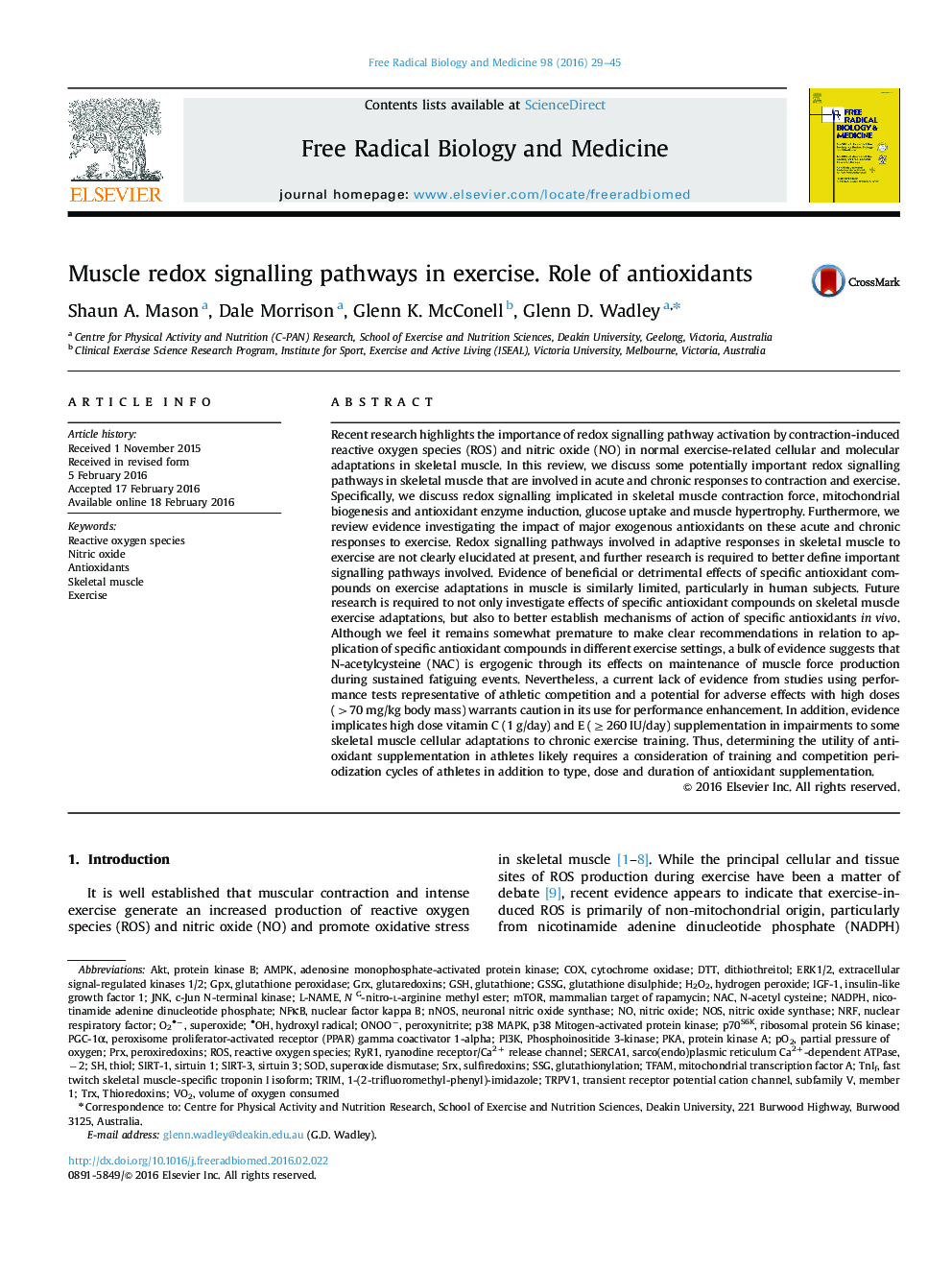| کد مقاله | کد نشریه | سال انتشار | مقاله انگلیسی | نسخه تمام متن |
|---|---|---|---|---|
| 1907652 | 1534945 | 2016 | 17 صفحه PDF | دانلود رایگان |
• Redox signalling in muscle is implicated in acute and chronic responses to exercise.
• Some antioxidants can modulate redox state and thus some of the responses to exercise.
• Clear evidence of effects in human muscle are lacking for most exogenous antioxidants.
• NAC (≤70 mg/kg) might be ergogenic and safe for a fatiguing bout of prolonged exercise.
• Doses of ≥1 g/d vitamin C with≥260IU/d vitamin E hampers some training effects.
Recent research highlights the importance of redox signalling pathway activation by contraction-induced reactive oxygen species (ROS) and nitric oxide (NO) in normal exercise-related cellular and molecular adaptations in skeletal muscle. In this review, we discuss some potentially important redox signalling pathways in skeletal muscle that are involved in acute and chronic responses to contraction and exercise. Specifically, we discuss redox signalling implicated in skeletal muscle contraction force, mitochondrial biogenesis and antioxidant enzyme induction, glucose uptake and muscle hypertrophy. Furthermore, we review evidence investigating the impact of major exogenous antioxidants on these acute and chronic responses to exercise. Redox signalling pathways involved in adaptive responses in skeletal muscle to exercise are not clearly elucidated at present, and further research is required to better define important signalling pathways involved. Evidence of beneficial or detrimental effects of specific antioxidant compounds on exercise adaptations in muscle is similarly limited, particularly in human subjects. Future research is required to not only investigate effects of specific antioxidant compounds on skeletal muscle exercise adaptations, but also to better establish mechanisms of action of specific antioxidants in vivo. Although we feel it remains somewhat premature to make clear recommendations in relation to application of specific antioxidant compounds in different exercise settings, a bulk of evidence suggests that N-acetylcysteine (NAC) is ergogenic through its effects on maintenance of muscle force production during sustained fatiguing events. Nevertheless, a current lack of evidence from studies using performance tests representative of athletic competition and a potential for adverse effects with high doses (>70 mg/kg body mass) warrants caution in its use for performance enhancement. In addition, evidence implicates high dose vitamin C (1 g/day) and E (≥260 IU/day) supplementation in impairments to some skeletal muscle cellular adaptations to chronic exercise training. Thus, determining the utility of antioxidant supplementation in athletes likely requires a consideration of training and competition periodization cycles of athletes in addition to type, dose and duration of antioxidant supplementation.
Journal: Free Radical Biology and Medicine - Volume 98, September 2016, Pages 29–45
